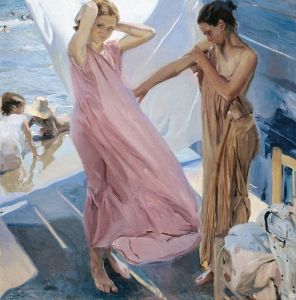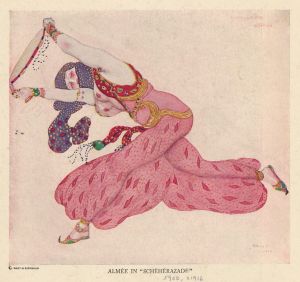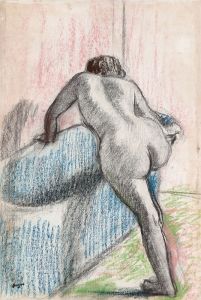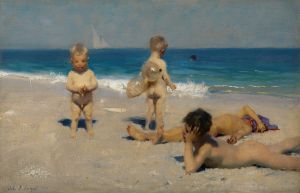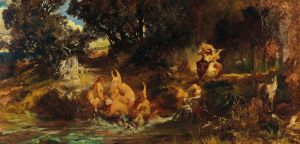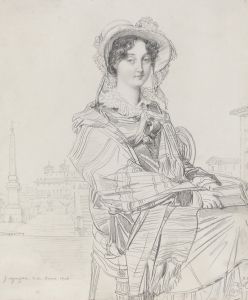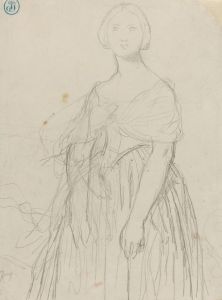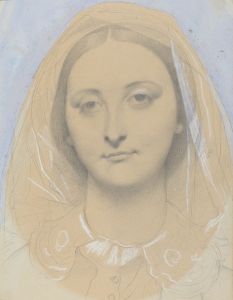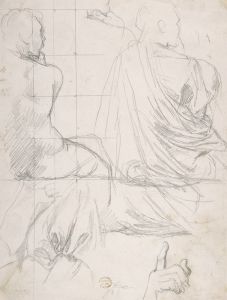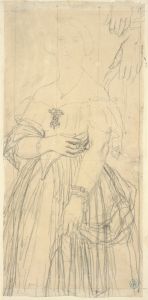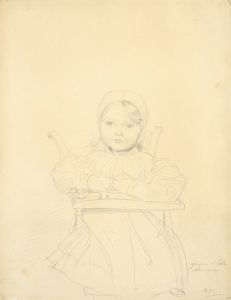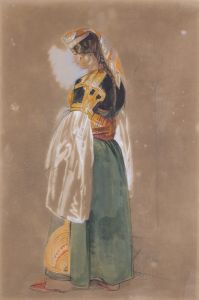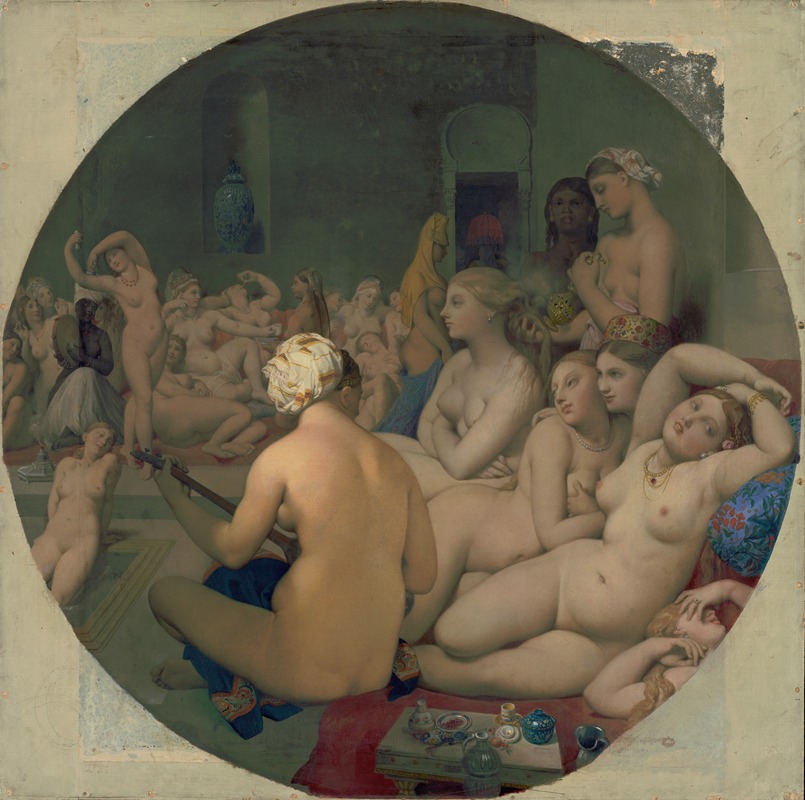
Le Bain Turc
A hand-painted replica of Jean Auguste Dominique Ingres’s masterpiece Le Bain Turc, meticulously crafted by professional artists to capture the true essence of the original. Each piece is created with museum-quality canvas and rare mineral pigments, carefully painted by experienced artists with delicate brushstrokes and rich, layered colors to perfectly recreate the texture of the original artwork. Unlike machine-printed reproductions, this hand-painted version brings the painting to life, infused with the artist’s emotions and skill in every stroke. Whether for personal collection or home decoration, it instantly elevates the artistic atmosphere of any space.
"Le Bain Turc" (The Turkish Bath) is an oil painting by the French Neoclassical artist Jean Auguste Dominique Ingres, completed in 1862. This work is notable for its depiction of an idealized vision of an Orientalist harem, a theme that was popular in 19th-century European art. Ingres, known for his precise draftsmanship and smooth, polished surfaces, brings these qualities to this painting, which is considered one of his masterpieces.
The painting is circular, with a diameter of 108 centimeters (approximately 42.5 inches), and is housed in the Louvre Museum in Paris, France. "Le Bain Turc" portrays a group of nude women in a harem setting, engaged in various leisurely activities such as bathing, playing music, and conversing. The composition is dense, with figures overlapping and intertwined, creating a sense of intimacy and sensuality. The women are depicted with elongated forms and smooth, porcelain-like skin, characteristic of Ingres' style.
Ingres' interest in Orientalism, a fascination with the cultures of the Middle East and North Africa, is evident in this work. Although he never visited the regions he depicted, Ingres drew inspiration from literary sources, travel accounts, and other artworks. "Le Bain Turc" reflects the Western fantasy of the exotic and erotic East, a common theme in 19th-century art and literature.
The painting's circular format, known as a tondo, is unusual for Ingres and adds to the sense of voyeurism, as if the viewer is peering through a porthole into a private world. This format also allows for a harmonious and balanced composition, with the figures arranged in a continuous, flowing manner around the central point.
Ingres initially conceived the painting as a rectangular composition in 1852, but later reworked it into its current circular form. This transformation involved significant changes to the composition, including the addition of more figures and the alteration of poses to fit the new format. The final version of "Le Bain Turc" was completed in 1862, when Ingres was in his early eighties, demonstrating his continued vitality and creativity as an artist.
The painting was met with mixed reactions upon its completion. Some praised its technical mastery and sensual beauty, while others criticized it for its perceived indecency and lack of moral content. Despite these criticisms, "Le Bain Turc" has been recognized as a significant work in Ingres' oeuvre and a quintessential example of Orientalist art.
Today, "Le Bain Turc" is appreciated for its artistic qualities and its insight into 19th-century European attitudes towards the East. It remains a subject of scholarly interest and public fascination, reflecting both the allure and the complexities of Orientalism in Western art.





